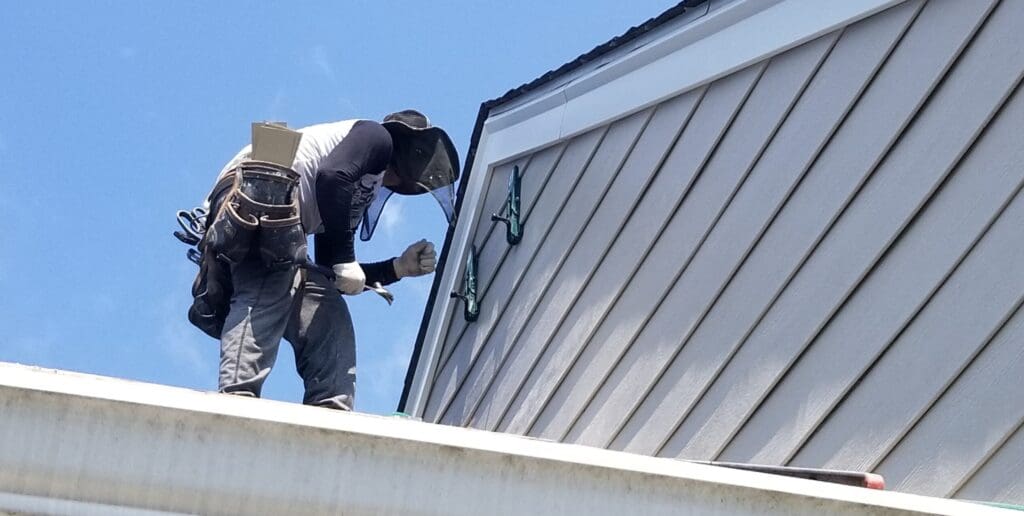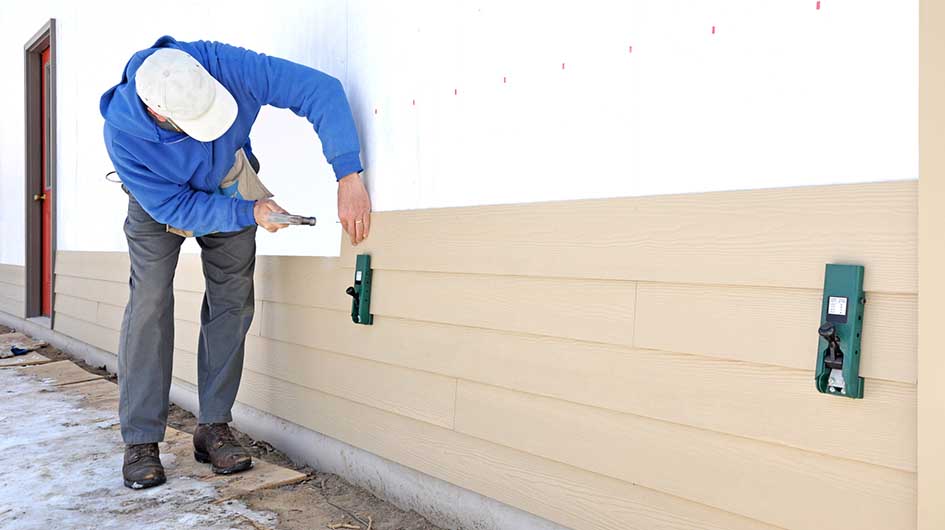The Vital Guide to the Different Kinds Of Home Siding and Their Special Advantages
In the realm of home renovation, choosing the best home siding is a critical decision that influences both visual charm and useful performance. The selection of products available, such as timber, vinyl, fiber steel, block, and cement, each deal unique benefits that deal with different demands and choices. Comprehending these distinctions can considerably improve the long life and worth of a property - morris siding contractor. With so lots of alternatives to consider, which exterior siding material genuinely stands out for your particular project? Discovering these choices can result in informed decisions that align with both style and practicality.
Wood Siding
Wood home siding, a prominent option for household outsides, provides a timeless aesthetic that incorporates all-natural charm with structural integrity. This exterior siding product is offered in different designs, consisting of clapboard, shingles, and board-and-batten, allowing house owners to personalize their appearance to match their style preferences. Wood home siding is usually crafted from durable varieties such as cedar, redwood, or want, which are recognized for their durability and capacity to stand up to environmental stress factors.
One of the primary benefits of timber siding is its superb insulation residential properties, which can add to power performance and reduced home heating expenses. Additionally, wood exterior siding is eco-friendly, making it an ecologically friendly option when sourced sustainably. Routine maintenance, including painting or staining, can extend its life expectancy and boost its look, allowing property owners to maintain the natural beauty of the wood.
Nonetheless, potential disadvantages include susceptibility to bugs, rot, and climate damage, demanding ample treatment and upkeep - morris siding contractor. Regardless of these problems, when properly cared for, wood exterior siding can give a gorgeous and sturdy service that boosts the character of a home while using a cozy, inviting ambience

Vinyl Exterior Siding
Vinyl house siding has actually become a leading selection for property owners seeking a low-maintenance exterior option that combines toughness and price. This flexible material is crafted from polyvinyl chloride (PVC), making it resistant to numerous climate condition, consisting of dampness and UV rays. Therefore, vinyl home siding does not warp, rot, or fade, guaranteeing long-lasting visual appeal.
Among the key benefits of plastic home siding is its extensive variety of styles and shades, permitting house owners to accomplish the wanted seek their residential or commercial property without the need for regular repainting. In addition, vinyl exterior siding is easy to mount, which can considerably lower labor prices throughout construction or improvement projects.
Vinyl home siding likewise adds to power efficiency. Many alternatives function insulation support, which boosts thermal efficiency, helping to preserve comfy interior temperatures and potentially lowering power costs. Its smooth surface area helps with easy cleansing, calling for just periodic washing with a yard pipe to eliminate dirt and debris.
Fiber Cement Exterior Siding
Fiber cement siding has actually acquired traction among home owners and home builders alike as a result of its remarkable mix of durability and aesthetic convenience. Made up of a mixture of cellulose, concrete, and sand fibers, this siding option is engineered to stand up to severe weather condition conditions, including high winds, hefty rain, and temperature level changes, making it a resilient choice for domestic outsides.
One of the key advantages of fiber cement siding is its resistance to bugs, such as termites, and its non-combustible nature, offering boosted fire safety. morris siding contractor. Furthermore, it is offered in a vast array of styles, textures, and colors, allowing home owners to attain their desired visual without giving up performance
Another benefit is its reduced upkeep requirements; fiber cement siding normally calls for you could look here painting or staining every 5-10 years, which is much less constant than other materials. Its durability adds to a lower total price of possession, as it minimizes the demand for regular repair work or replacements.
Eventually, fiber cement siding stands for an exceptional financial investment for those seeking a durable, attractive, and functional exterior option, combining both type and feature to boost the home's aesthetic allure.
Steel House Siding
The attraction of metal siding lies in its robust sturdiness and modern visual allure, making it a favored selection for modern architecture. Offered in products such as light weight aluminum and steel, steel home siding offers a variety of finishes and colors, permitting house owners to attain an individualized look that matches their layout vision.

Power efficiency is one more significant advantage, as numerous steel siding items are designed with insulation options that aid manage indoor temperature levels. This can bring about reduced power costs gradually. Furthermore, metal home siding is commonly recyclable, making it an eco-friendly choice for sustainability-minded house owners.
The installment procedure for metal home siding can be relatively straightforward, resulting in a quicker turn-around time for building jobs. In general, metal siding incorporates performance and style, making it a practical option for those looking for a aesthetically enticing and long-lasting exterior coating.
Brick and Rock Siding
Block and stone home siding stands out as a timeless choice that boosts the aesthetic appeal of any home. Known for their longevity and low maintenance, these materials give a remarkable roi while boosting the residential or commercial property's curb allure. Readily available in different colors, structures, and patterns, brick and stone can be customized to suit Check Out Your URL diverse architectural designs, from typical to modern-day.
One of the key benefits of brick and stone exterior siding is their energy performance. Both materials possess all-natural protecting buildings that help manage indoor temperatures, potentially lowering heating & cooling costs. Furthermore, they provide premium fire resistance compared to various other siding alternatives, adding to boosted safety.
Another benefit is their long life. Block and stone can last for years, usually needing marginal upkeep beyond occasional cleaning. Unlike timber exterior siding, they are unsusceptible pests and rot, ensuring a long-lasting outside that holds up against the components.
Final Thought
In summary, the option of house siding substantially affects a home's visual appeal, energy efficiency, and maintenance requirements. Each sort of home siding-- whether wood, plastic, fiber brick, concrete, or metal and rock-- offers one-of-a-kind benefits tailored to numerous property owner preferences and environmental problems. Understanding these options allows notified decisions that improve both the sturdiness and visual charm of household outsides. Eventually, picking the best siding is necessary for attaining a balance between functionality and layout in household design.
One of the primary benefits of timber siding is its excellent insulation residential or commercial properties, which can contribute to energy performance and reduced heating expenses. In addition, timber siding is biodegradable, making it an eco friendly choice when sourced sustainably.One of the key benefits of metal siding is its resistance to various environmental aspects.Power efficiency is an additional significant advantage, as many steel siding products are developed with insulation get redirected here choices that aid control indoor temperature levels. Each kind of siding-- whether wood, plastic, fiber concrete, block, or steel and rock-- provides one-of-a-kind benefits customized to numerous homeowner choices and environmental problems.